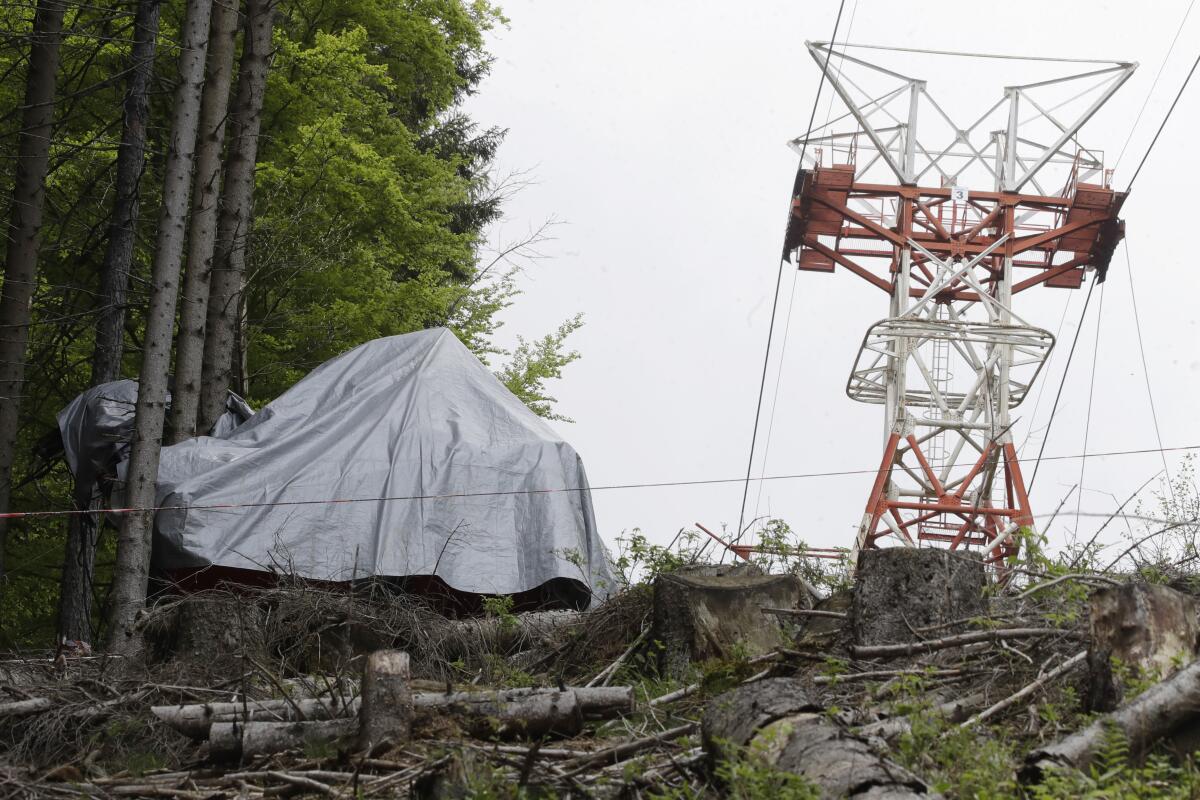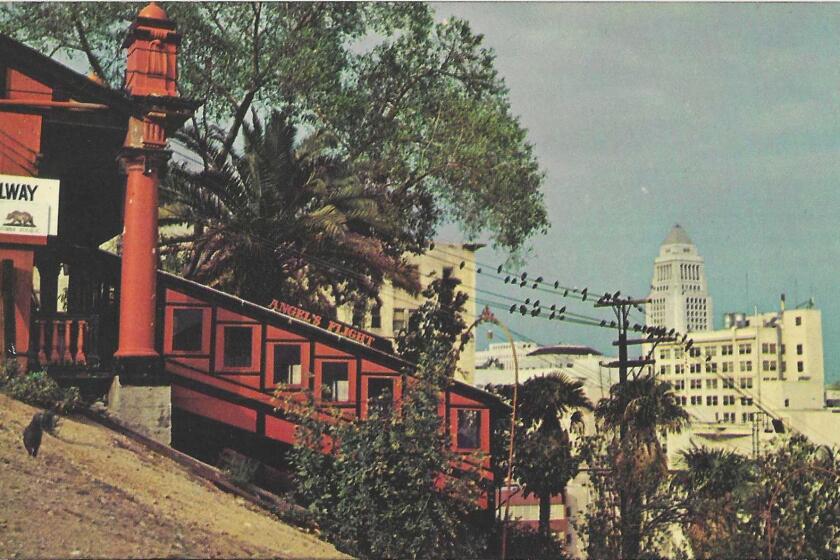Judge lays blame in deadly Italy cable car crash on technician

- Share via
ROME — The three suspects in the Italian cable car disaster that killed 14 people have been released from jail after a judge indicated that blame primarily rests with just one of them: a service technician who intentionally disabled the car’s emergency brake because it kept locking spontaneously.
Judge Donatella Banci Buonamici said Sunday there wasn’t sufficient evidence suggesting that the owner of the Mottarone cable car company, Luigi Nerini, or the maintenance chief, Enrico Perocchio, knew that the technician had deactivated the brake on several occasions even before the May 23 disaster.
After evaluating prosecutors’ request for continued detention of the three, Buonamici determined that there was no flight risk and ordered the managers freed. The technician, Gabriele Tadini, was also allowed to leave jail but was placed under house arrest.
The three men, who remain under investigation, were released from Verbania jail early Sunday, accompanied by their lawyers.
Fourteen people were killed when the lead cable of the Mottarone cable car overlooking Lake Maggiore in northern Italy snapped, and the emergency brake failed to prevent the cable car from reeling at high speed backward down the support line. The cable car pulled off the line entirely after passing the support pylon, crashed to the ground and then rolled down the mountain until it was stopped by a stand of trees.
The lone survivor, 5-year-old Eitan Biran, remains hospitalized but conscious, with his aunt looking after him. Eitan’s Israeli-born parents, his younger brother and two of his great-grandparents were killed in the disaster. Their remains were sent back to Israel.
A series of cable cars carrying tourists stopped working at high altitude over the Mont Blanc massif in the Alps on Thursday, prompting a major rescue operation and leaving 45 people trapped in midair overnight, France’s interior minister said.
It isn’t known why the pulling cable snapped.
The Vipiteno, Italy-based company that maintains the cable car system, Leitner SpA, has said “no irregularities were detected” during the November 2020 magnetic testing of the lead cable, and that every other annual check hadn’t turned up problems either.
Tadini admitted during questioning that he had left a fork-shaped bracket on the cable car’s emergency brake to disable it because it kept locking on its own while the car was in service, said his lawyer, Marcello Perillo.
Speaking to reporters outside Verbania jail, Perillo said Tadini never would have left the bracket in place if he thought doing so might endanger passengers.
Everybody knows Angels Flight. But what about Court Flight? Or the Mt. Washington Railway? Or the Catalina Island funicular? Here’s the story of the cars that climbed Southern California’s hills and the automobiles and other calamities that all but made them extinct.
“He is not a criminal and would never have let people go up with the braking system blocked had he known that there was even a possibility that the cable would have broken,” Perillo said. “He can’t even begin to get his head around the fact that the cable broke.”
Based on Tadini’s testimony, prosecutors had hypothesized that the managers knew about the jerry-rigged brake and had an economic reason to use it to keep the cable car service running. Prosecutor Olimpia Bossi said the owner would have had to take the whole lift out of service for the more extensive repairs that were necessary.
The lift, which features four large tram cars bringing passengers up and down the mountain, reopened April 26 after a lengthy COVID-19 shutdown and was gearing up for the summer tourist season in a picturesque part of northern Italy.
Lawyers for Nerini and Perocchio said the two denied knowing anything about Tadini’s actions and said they had no reason to let a cable car without a brake system operate. The judge concurred, noting that neither they nor Leitner, the maintenance company, would have had an interest in doing so.
Breaking News
Get breaking news, investigations, analysis and more signature journalism from the Los Angeles Times in your inbox.
You may occasionally receive promotional content from the Los Angeles Times.
Nerini’s attorney, Pasquale Patano, said the owner “had no interest in not repairing the cable car” since he paid a flat fee of $183,000 a year for unlimited maintenance from Leitner to keep the system safe and operational.
Perocchio, who works for Leitner SpA, similarly denied any knowledge of Tadini’s decision about the bracket. Perocchio’s lawyer, Andrea Da Prato, suggested that his client had been arrested because the prosecutor felt pressure to produce quick results in the investigation into the tragedy.
As he left jail, Perocchio said he was “desperately sad” for the victims and never would have authorized disabling the emergency brake.
“I’ve been working in cable cars for 21 years and I know there’s no reason in the world to do that,” he told reporters.
The judge’s ruling noted that Tadini had called Perocchio twice to send in repair crews since the lift reopened because of the brake problem, but that the problem persisted after the crews left. Even though Tadini insisted that Perocchio and Nerini knew about his patchwork repair, the judge said he was likely trying to shift some of the blame onto people who could afford to pay damages, and wasn’t a credible enough witness to warrant their continued detention.
Maintenance company Leitner has said that using the fork-shaped brackets was “expressly forbidden” when passengers were in the cabin. The brackets are meant to be used when the cabin — part of a transport system known as an aerial tram — is parked in the station for the night or to do repair work.
Leitner has provided investigators with documentation of the lift’s maintenance record and declared itself an injured party in the case, saying it plans to donate any awarded damages to the families of the victims.
More to Read
Sign up for Essential California
The most important California stories and recommendations in your inbox every morning.
You may occasionally receive promotional content from the Los Angeles Times.













